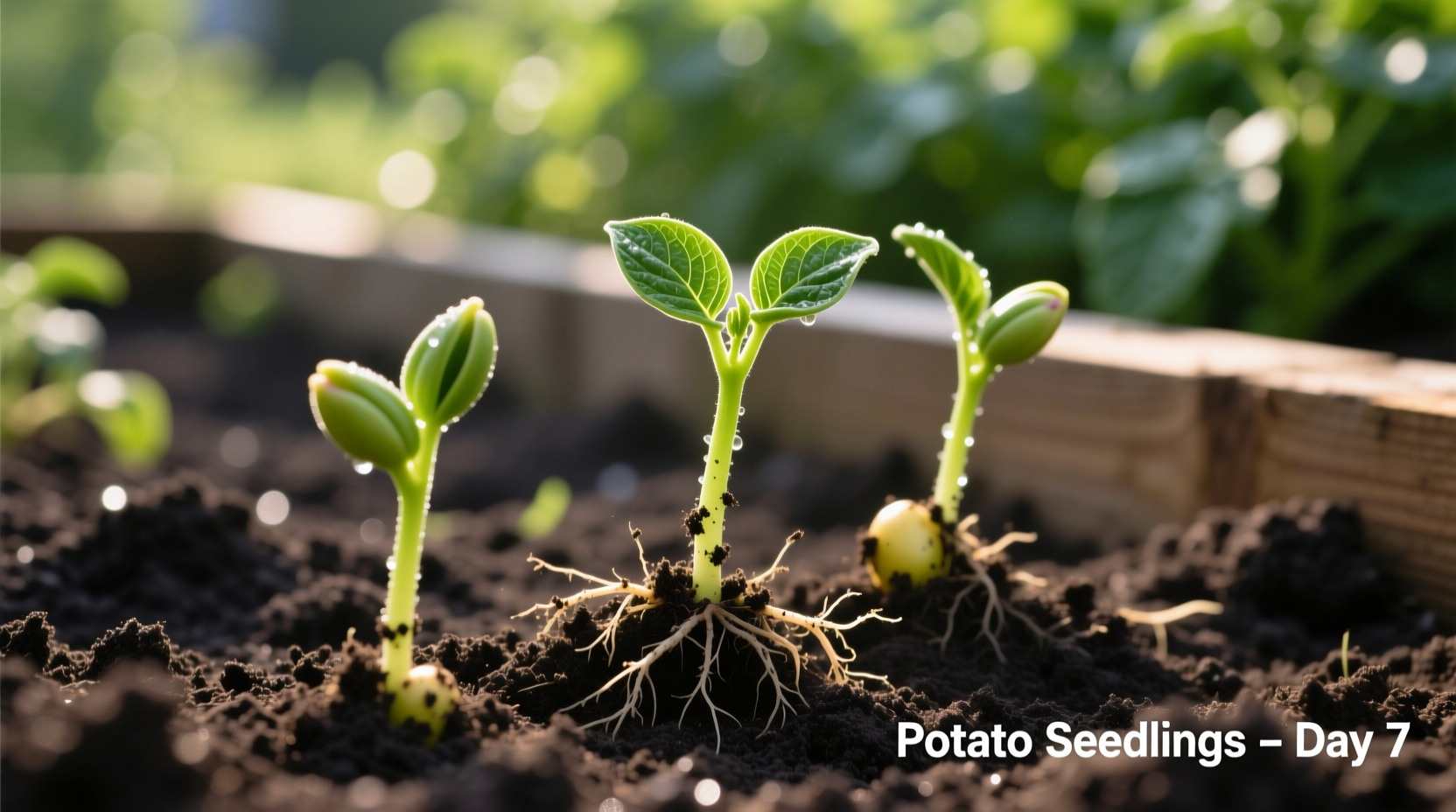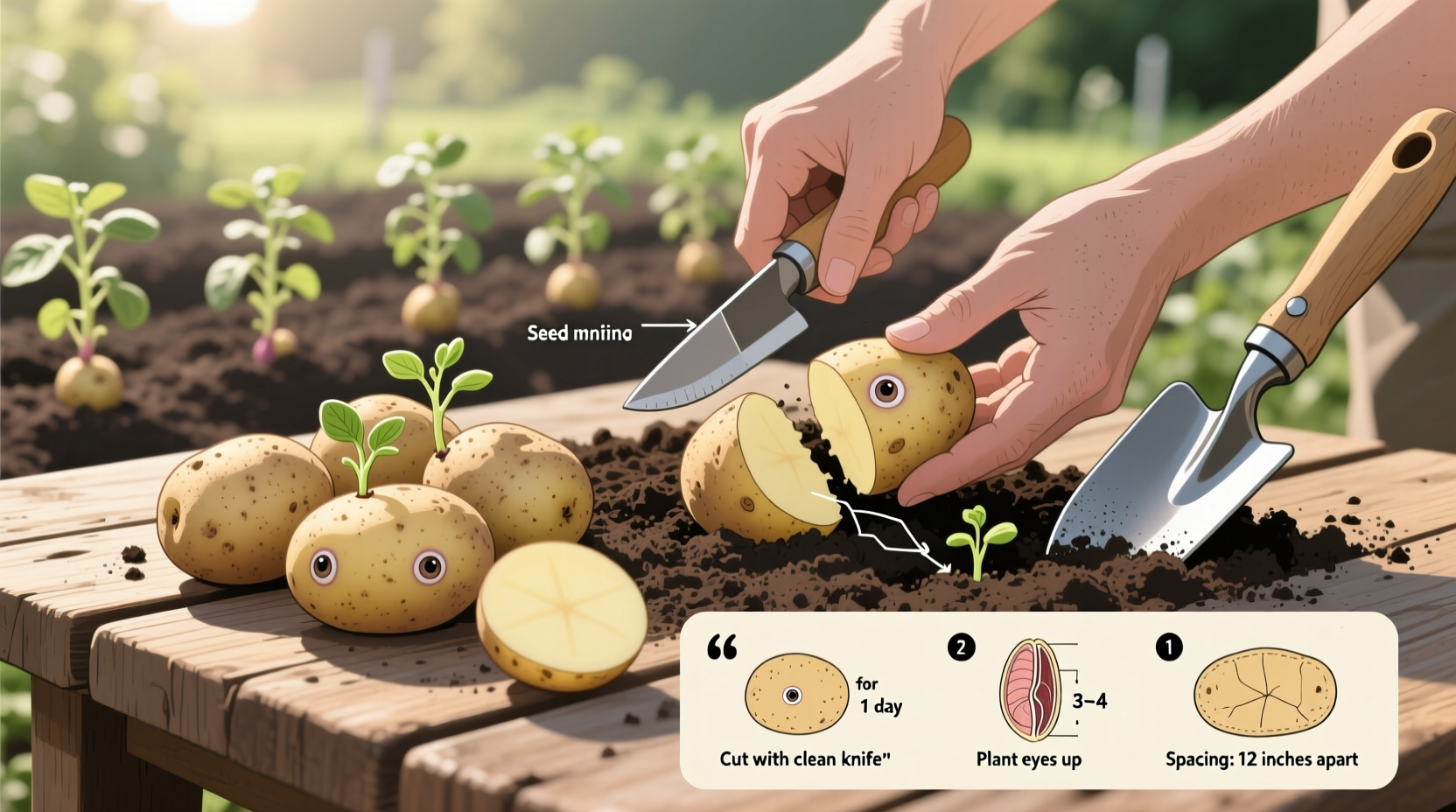Why Growing Potatoes from Seed Beats Store-Bought Tubers
Most gardeners mistakenly buy "seed potatoes" (certified disease-free tubers), but planting true potato seeds offers significant advantages: complete disease resistance, genetic diversity, and access to heirloom varieties unavailable as tubers. University of Maine research shows seed-grown potatoes develop stronger root systems and adapt better to local conditions than tuber-propagated plants.

Understanding Potato Seeds vs. Seed Potatoes
| Characteristic | True Potato Seeds | Seed Potatoes |
|---|---|---|
| Origin | From pollinated flowers (berry seeds) | Dormant tubers |
| Disease Risk | Negligible (no soil pathogens) | High (soil-borne diseases) |
| Genetic Diversity | High (unique plants) | None (clones) |
| Time to Harvest | 100-120 days | 70-90 days |
| Best For | Long-term garden health | Quick harvests |
When to Plant Potato Seeds: Climate-Specific Timing
Timing determines your success. The USDA Planting Guidelines recommend starting seeds indoors 8-10 weeks before last frost in colder zones (3-5), while gardeners in zones 6-8 can direct-sow 2-3 weeks before last frost. In southern climates (zones 9-11), plant in late fall for winter harvest. Soil thermometers are essential - never plant when soil remains below 45°F, as cold, wet conditions cause seed rot.
Soil Preparation: The Foundation for Healthy Plants
Prepare your garden bed 2 weeks before planting:
- Test soil pH using a $10 kit (ideal range: 4.8-6.0)
- Add 3 inches of compost and till to 12-inch depth
- Mix in 5-10-10 fertilizer at 1 lb per 100 sq ft
- Create raised beds 6-8 inches high for drainage
Extension services at Cornell University emphasize that proper drainage prevents common issues like blackleg disease. Avoid fresh manure which promotes scab.
Step-by-Step Planting Process
Starting Seeds Indoors (Recommended)
For strongest plants:
- Fill seed trays with sterile potting mix
- Sow 2 seeds per cell 1/4 inch deep
- Maintain 65-75°F with bottom heat
- Provide 14 hours of light daily
- Thin to strongest seedling after true leaves appear
Direct Sowing Outdoors
When soil reaches 50°F:
- Mark rows 24-36 inches apart
- Create shallow trenches 1/4 inch deep
- Place seeds 6 inches apart
- Cover lightly with soil
- Water gently to avoid displacement
Growth Timeline: What to Expect Week by Week
Track your plants' progress using this verified timeline from Oregon State University Extension:
- Weeks 1-2: Germination (keep soil moist but not wet)
- Weeks 3-4: First true leaves appear (begin light fertilizing)
- Weeks 5-6: Transplant outdoors after hardening off
- Weeks 7-10: Flowering begins (hill soil around stems)
- Weeks 11-16: Tuber formation (maintain consistent moisture)
- Weeks 17-20: Harvest when foliage yellows
Essential Care Practices for Maximum Yield
Professional growers use these techniques:
- Hilling: Mound soil around stems when plants reach 8 inches tall, repeating every 2 weeks until flowering
- Watering: Provide 1-2 inches weekly (more during tuber formation)
- Pest Control: Use row covers against Colorado potato beetles
- Fertilizing: Apply potassium-rich fertilizer when flowers appear
According to the University of California Agriculture Department, inconsistent watering causes hollow heart in tubers - maintain 1-2 inches weekly without fluctuations.
Avoiding Common Planting Mistakes
Extension service data shows these errors reduce yields by 30-50%:
- Planting too deep (seeds rot in cold soil)
- Overcrowding (leads to small tubers)
- Using non-sterile soil (introduces diseases)
- Skipping hilling (exposes tubers to sun, causing greening)
Gardeners in humid regions should particularly avoid evening watering, which promotes fungal diseases according to Mississippi State University research.
Harvesting and Storage Tips
Harvest "new potatoes" 7-8 weeks after planting when flowers appear, or wait for full-size tubers when foliage yellows. Cure harvested potatoes at 50-60°F with high humidity for 10-14 days before storage. The USDA recommends storing at 38-40°F with 90-95% humidity for maximum shelf life.











 浙公网安备
33010002000092号
浙公网安备
33010002000092号 浙B2-20120091-4
浙B2-20120091-4